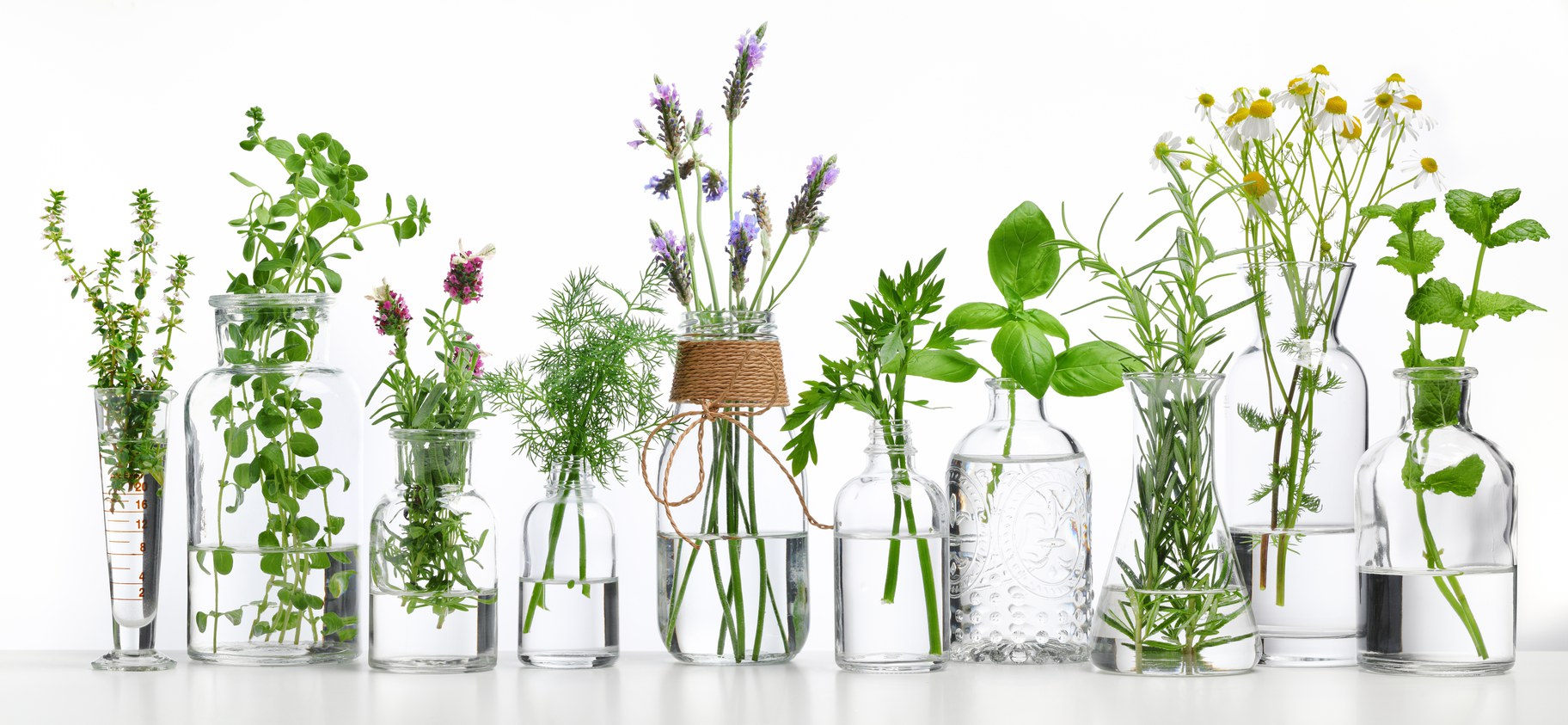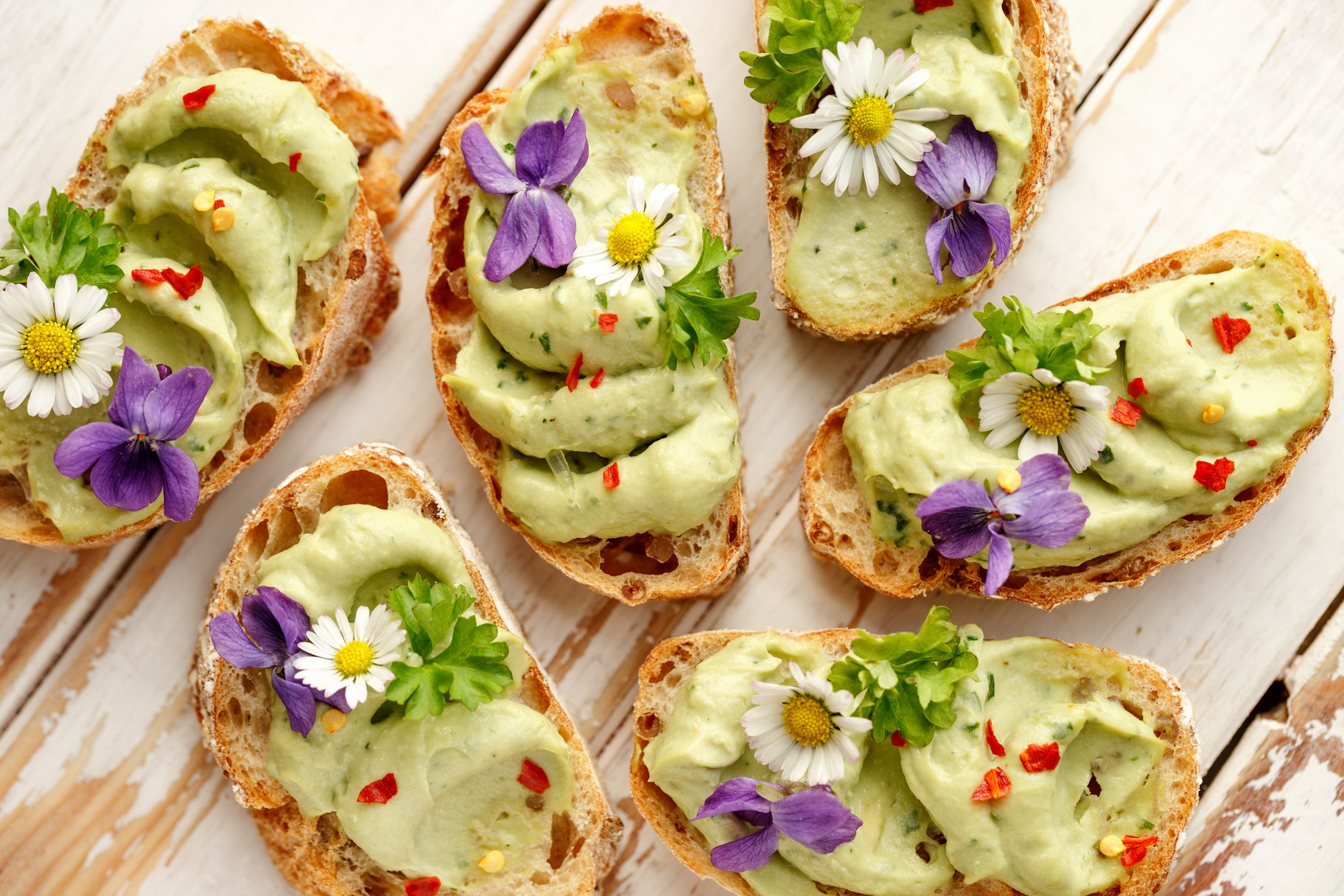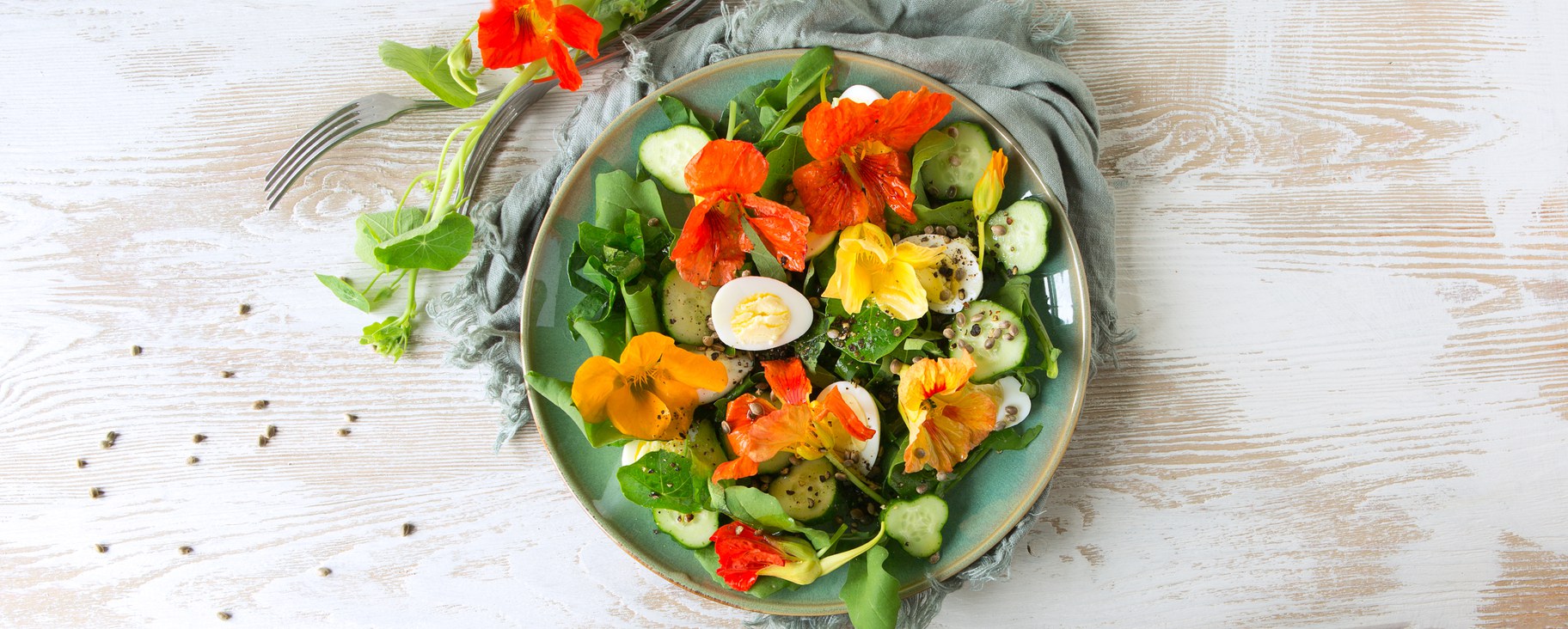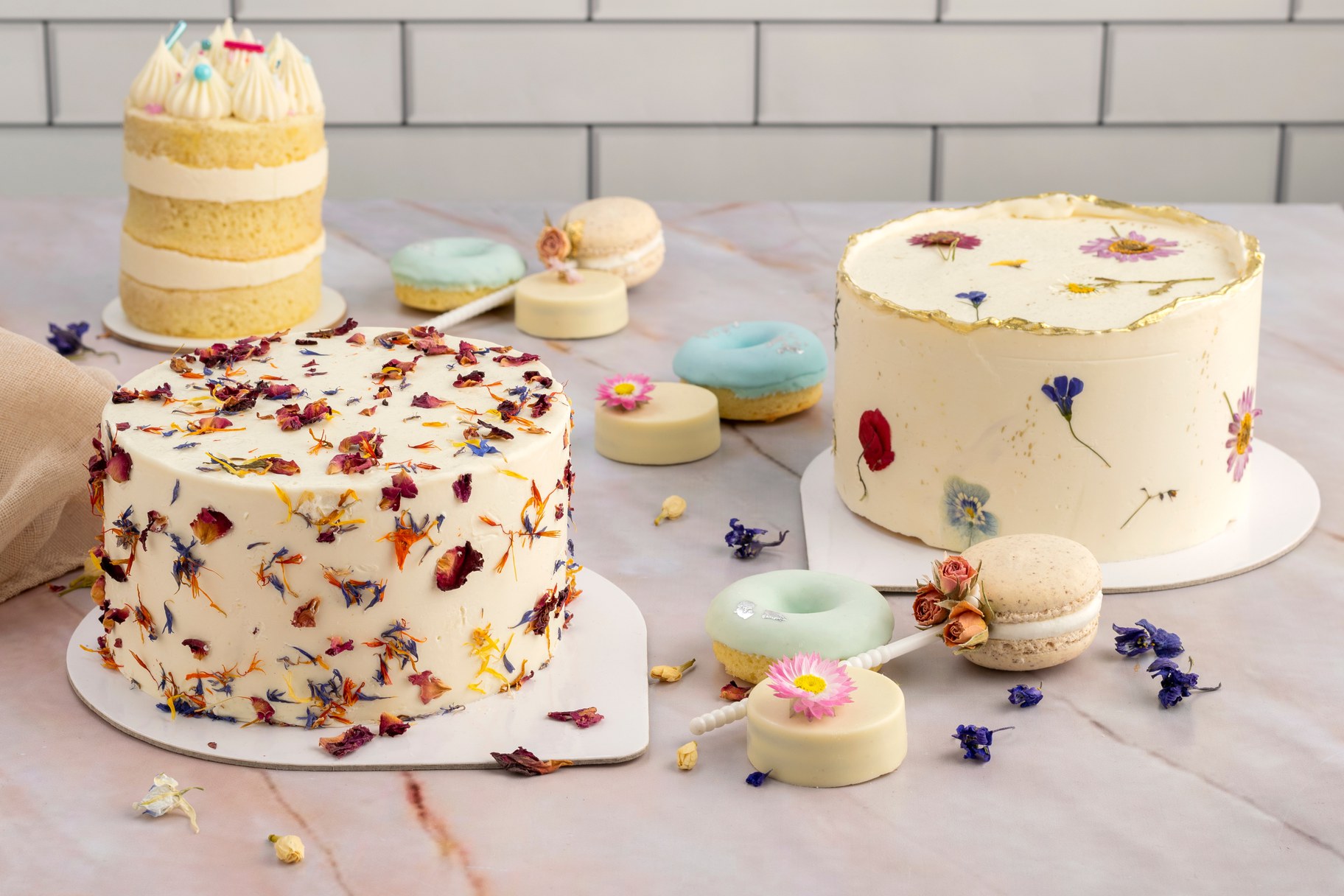We’ve all seen the images on Instagram: plates of food made uniquely striking through the use of edible flowers either as intrinsic ingredients or as edible garnish. Maybe it’s a salad made of a variety of tender leaves studded with tiny violas. Or perhaps it’s a dish of ice cream enhanced with pretty sugar encrusted pink rose petals. Whatever the case, most of us have eaten or drunk something floral, maybe without thinking: zucchini flowers, jamaica (hibiscus flowers), or rose-infused syrups. Wouldn’t it be lovely to cultivate a pot or two of easy-to-grow plants just for the visual pleasure of their flowers, then snip a few to enhance a familiar dish at the table?
After the soaking we’ve had, the ground is primed for planting if you have the space. Just tuck a plant or two in amongst what you already have. Or if you’re apartment-bound, try a pot or do outside the front door, on a balcony or near a sunny window. Flowers tend to taste like the plant from which they grow.

Herbs have a period of flowering that’s not to be missed for edible opportunities. Photo courtesy of Shutterstock.
The easiest way to grow edible flowers is to cultivate your favorite herbs. Bees love the blossoms which is a benefit for everyone. Herbal blossoms can have a more mild taste than the herb or a stronger one. Always taste before you add them to a dish. Chive blossoms are oniony, mint flowers are minty, arugula flowers are spicy and sweet. Rosemary flowers are lovely as a garnish on roasts and are milder than the herb itself. Cilantro flowers are very easy to grow since the herb bolts so quickly, are tiny, white hits of that characteristic green taste that lifts any dish. And thyme’s dark purple blooms offer that signature scent in a little ball of color. The same is true of oregano. For the last couple of years I’ve planted fennel in the garden as a landscape plant, not for the bulb. Their feathery tops are so pretty and the flowers that unfurl like umbrellas are marvelous on cheeses or in salads. In general, pinching or snipping off herbal blooms will often allow you to keep the plant alive longer.

Edible flowers can make a simple dish more special. Photo courtesy of Shutterstock.
The next level of growing edible flowers is to nurture actual flowers that are suited to the kitchen. My favorite and one of the easiest to grow are nasturtiums. They come in a host of colors and grow easily from seed. Now is the perfect time to scatter some in a pot that might be hosting something else or in your garden bed. I tend to tuck them near something I can drape their vines upon. Be fearless. Pansies, violas, or Johnny Jump-ups are all adorable and are so pretty in pots. If you’re lucky enough to have lilacs give them a nibble. They’re lovely in syrups. Marigolds also called calendulas come in a wide variety of colors and one blossom can yield many, many beautiful shards of color and flavor to scatter about. The orange variety is often called poor man’s saffron and has a slight astringent taste. And, of course, scented geranium flowers taste lightly of their type, be it rose, or ginger or pineapple. I often take a few lemon and orange blossoms from my trees and add them to a jar of sugar. The aroma infuses throughout the crystals. Of course you don’t want to remove too many tree blossoms lest you get less fruit. Experiment and look at what you already have planted with a different eye, not only for viewing but for tasting.

Nasturtiums are wonderful in salads. Photo courtesy of Shutterstock.
A note about what constitutes “edible.” Do your research and make sure that the bloom you have your heart set on isn’t poisonous. Also be aware if the bloom is edible but other parts of the plant are not. Then once you’ve chosen your plants, look for those that have been organically grown without pesticides and of course, once they’re in your garden, continue to keep them free of any treatments they would make them unsuitable for eating. Growing flowers from seed takes patience but can yield big rewards and gives you control of the way they’re grown. Harvest flowers in the early morning as they begin to release their nectar. Before using flowers you want to wash any dirt off of them.

Edible flower petals are a natural decoration for cakes. Photo courtesy of Shutterstock.
